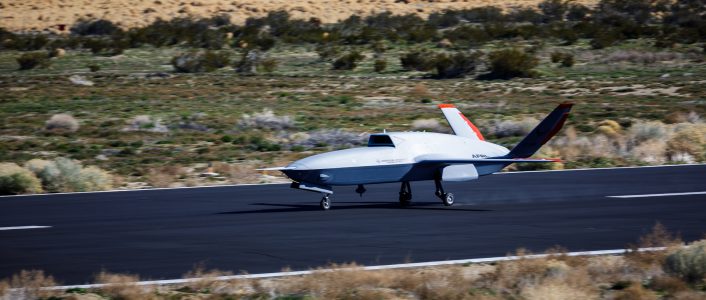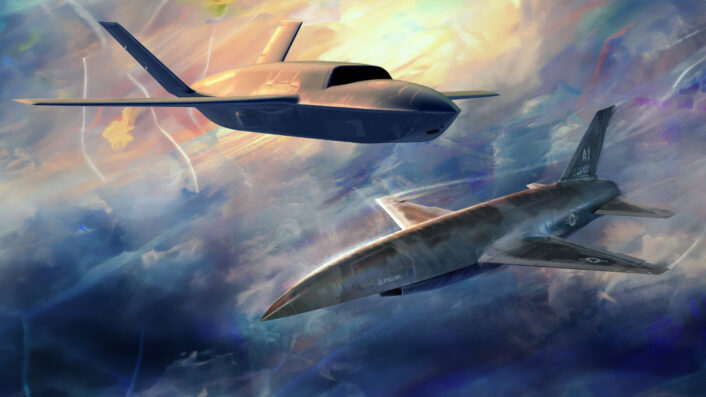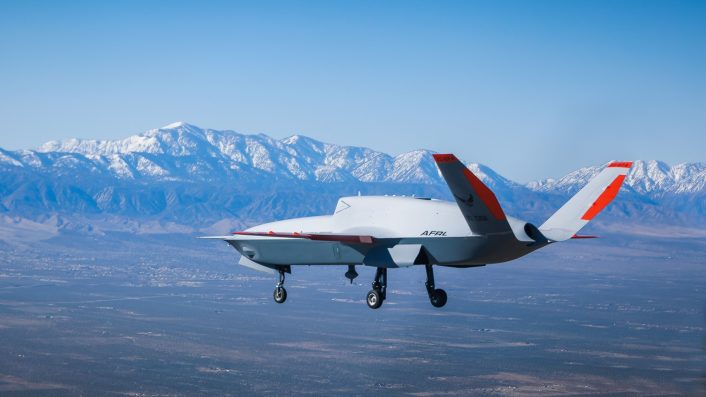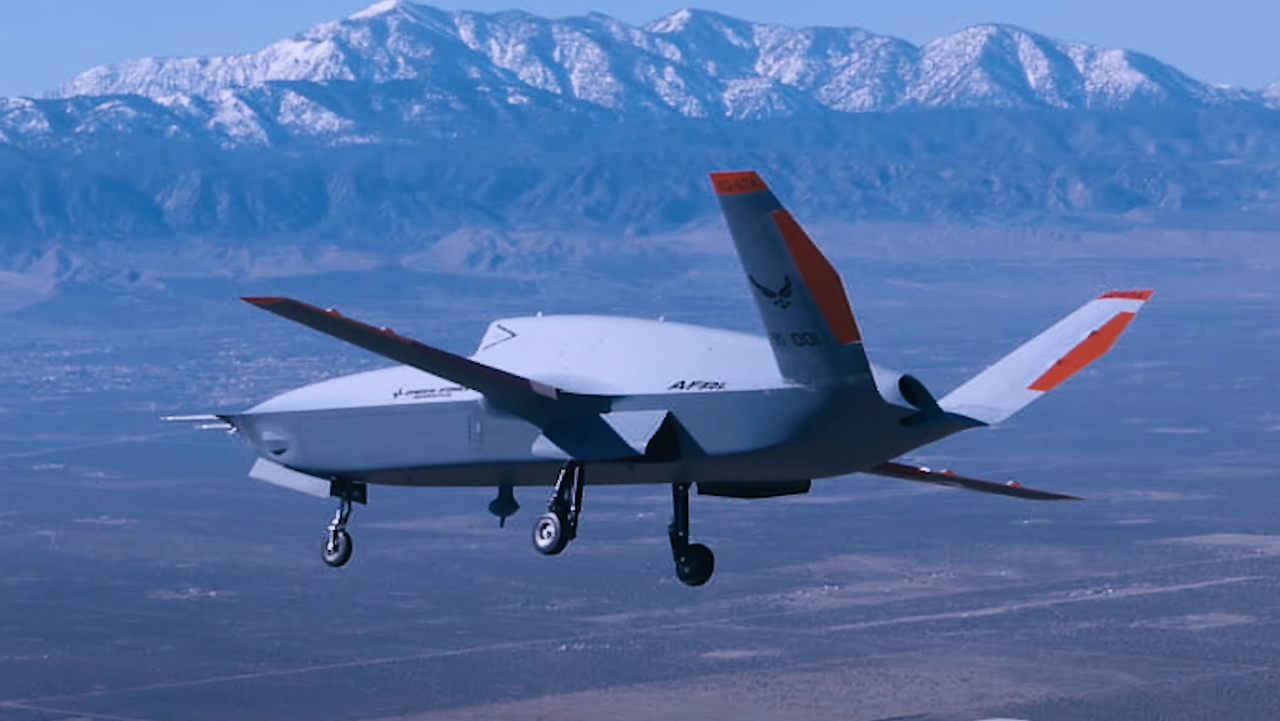The first flight of the new XQ-67A took place in February 2024 but the first air-to-air footage was just released.
Developed by General Atomics Aeronautical Systems (GA-ASI) as part of the USAF’s Off-Board Sensing Station (OBSS) program, the XQ-67A made its first flight at the General Atomics Gray Butte Flight Operations Facility near Palmdale, California, on Feb. 28, 2024.
While some images of the XQ-67A during its maiden flight were made available back then by the Air Force Research Laboratory, the first in-flight video of the unmanned aircraft (courtesy of General Atomics) was released only on Jun. 26, 2024.
XQ-67A
Developed by General Atomics Aeronautical Systems (GA-ASI) as part of the USAF’s Off-Board Sensing Station (OBSS) program, the XQ-67A is intended to act as an attritable forward radar node, addressing the USAF’s current urgent need for such a platform. Notable features of the XQ-67A include side-looking radars on either side of the fuselage. This unmanned aerial surveillance platform is part of the USAF’s shift towards a distributed combination of manned and unmanned aircraft to replace the E-8 JSTARS retired last year.
The OBSS program evolved from the former Low Cost Attritable Aircraft Technologies (LCAAT) program, which previously developed the XQ-58A Valkyrie. The subsequent Low Cost Attritable Aircraft Platform Sharing (LCAAPS) program transferred the technology and knowledge from the XQ-58A into the OBSS program. The XQ-67A is the first of the second generation of such Autonomous Collaborative Platforms (ACP).

AFRL’s XQ-67A, designed, built, ground-tested, and flown in just over two years, is remotely piloted but capable of autonomous flight. It complements the Air Force Test Center’s X-62 VISTA and F-16 VENOM efforts to speed the fielding of Collaborative Combat Aircraft (CCA).

Doug Meador, ACP capability lead with AFRL’s Aerospace Systems Directorate, at the time of the first flight said that “the XQ-67A proves the common chassis or ‘genus’ approach to aircraft design, build and test.”

In fact, both the XQ-67A and XQ-58A share the same design principles. This approach saves time and money by leveraging standard substructures and subsystems, similar to how the automotive industry builds a product line. This “genus” approach allows different aircraft kits to be added to the frame, such as an Off-Board Sensing Station or Off-Board Weapon Station (OBWS). The OBWS is expected to be the next drone from this family, testing the abilities of a missile-carrying loyal wingman.
LCAAPS and OBSS program manager from AFRL’s Aerospace Systems Directorate, Trenton White, emphasized after the type’s first flight that “The intention behind LCAAPS early on was these systems were to augment, not replace, manned aircraft.” He added that the goal from the beginning of the LCAAT program was to have multiple vehicles in development, integrating sensors, autonomy, weapons, payloads, and electronics onto the platform as they became ready.
With the XQ-67A focusing on its role as an aerial surveillance platform, it is anticipated that more unmanned platforms from the same family will be introduced in the coming years, focusing on other roles such as weapons delivery and electronic warfare.













